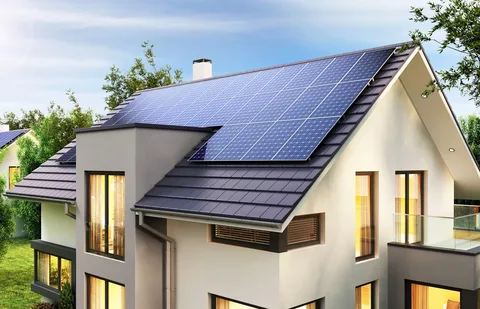As more homeowners seek sustainable and cost-effective energy solutions, solar power has become an increasingly popular choice. Understanding the components of a home solar power system is essential for anyone considering making the switch to solar energy. A well-designed system can reduce energy bills, lower carbon footprints, and increase energy independence. This article breaks down the essential components that make up a typical home solar power system.
1. Solar Panels
At the heart of any solar power system are the solar panels. These panels are responsible for capturing sunlight and converting it into direct current (DC) electricity. There are three main types of solar panels:
-
Monocrystalline – High efficiency and space-saving, but more expensive.
-
Polycrystalline – More affordable with slightly lower efficiency.
-
Thin-film – Lightweight and flexible, but typically less efficient.
Choosing the right type depends on your budget, roof size, and energy needs.
2. Inverter
Solar panels generate DC electricity, but most home appliances run on alternating current (AC). That’s where the inverter comes in—it converts DC into usable AC power. There are several types of inverters used in residential systems:
-
String inverters
-
Microinverters
-
Power optimizers
Each has its pros and cons, depending on the size and layout of your solar array.
3. Mounting System
The mounting system is what physically secures the solar panels to your roof or ground. It’s a crucial component, especially in areas prone to strong winds or harsh weather. Mounting systems are designed to maximize panel exposure to sunlight and can be:
-
Fixed mounts
-
Adjustable mounts
-
Tracking systems (which follow the sun’s movement)
4. Battery Storage (Optional)
For homeowners who want energy independence or live in areas with frequent power outages, battery storage is an essential addition. Batteries store excess energy generated during the day for use at night or during cloudy periods. Common battery types include:
-
Lithium-ion batteries – Efficient and long-lasting
-
Lead-acid batteries – More affordable but less efficient
With storage, your solar system becomes a more resilient and self-sufficient energy solution.
5. Charge Controller
A charge controller is used in systems that include battery storage. It regulates the voltage and current coming from the solar panels to the battery, preventing overcharging and prolonging battery life. While not always necessary in grid-tied systems without batteries, it’s critical for off-grid setups.
6. Electrical Panel and Utility Meter
The electrical panel distributes solar electricity throughout your home. In grid-tied systems, a utility meter records how much energy you produce and use. Many systems use net metering, which allows excess energy to be fed back into the grid in exchange for credits on your electricity bill.
Conclusion
Understanding the components of a home solar power system can help you make informed decisions about installation, maintenance, and energy use. From solar panels and inverters to battery storage and utility meters, each part plays a crucial role in creating a reliable, efficient solar energy setup. As you consider adopting solar energy, a clear grasp of how these components work together will ensure you get the most out of your investment.
If you’re serious about going solar, start by understanding the components of a home solar power system—because the more you know, the more empowered your energy future becomes.


